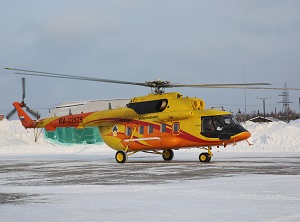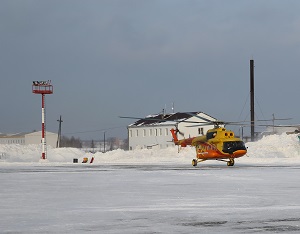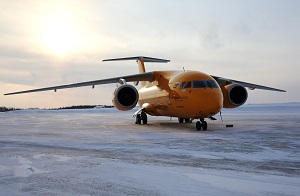New Mi-171 helicopters start to transport shift teams to the fields of Vankor cluster

Two new Mi-171 helicopters started transport shift teams to the fields of Vankor cluster as a part of the implementation of Rosneft's policy for modernization of fleet involved in the Company's aircraft service. Mi-171 helicopter is the latest modification of the Mi-8 helicopters series. It is designed for comfortable transportation of up to 26 passengers and equipped with modern aviation electronics and navigation gear, power package of increased capacity, and has improved performance characteristics and capabilities.
 Currently air service for the Vankor cluster fields for RN-Vankor is carried out by 17 medium helicopters of modern modifications: Mi-8MTVs, the Mi-8AMTs and Mi-171, the average age of which does not exceed 8 years. The significant upgrade of the involved helicopter fleet is the result of consistently pursued measures of the Company, aimed at the increasing flight safety level and the establishment of high requirements for aviation equipment and qualifications of the personnel of contracting airlines.
Currently air service for the Vankor cluster fields for RN-Vankor is carried out by 17 medium helicopters of modern modifications: Mi-8MTVs, the Mi-8AMTs and Mi-171, the average age of which does not exceed 8 years. The significant upgrade of the involved helicopter fleet is the result of consistently pursued measures of the Company, aimed at the increasing flight safety level and the establishment of high requirements for aviation equipment and qualifications of the personnel of contracting airlines.
Furthermore, the Company engaged to exploitation advanced and comfortable regional aircraft An-148 for passenger transportation to Igarka from Krasnoyarsk and Tomsk, replacing previously used Tu-134 and AN-24. The new aircraft have an increased flight range and are designed for carrying up to 85 passengers; their cabins correspond to the level of modern long-distance liner.
 In short-term perspective Rosneft plans to arrange the shift teams transportation to Vankor using the passenger light multipurpose aircraft DHC-6 Twin Otter S400 with passenger capacity of up to 19 people, with a shortened takeoff and landing distance and ability to perform takeoffs and landings from unpaved (covered with snow and ice) airfields. This type of aircraft is widely used on short-haul airlines.
In short-term perspective Rosneft plans to arrange the shift teams transportation to Vankor using the passenger light multipurpose aircraft DHC-6 Twin Otter S400 with passenger capacity of up to 19 people, with a shortened takeoff and landing distance and ability to perform takeoffs and landings from unpaved (covered with snow and ice) airfields. This type of aircraft is widely used on short-haul airlines.
Note for Editors:
Rosneft's subsidiary RN-Vankor is an operator for development of the Vankor cluster including Vankor, Suzun, Tagul and Lodochnoe fields located in Turukhansk and Taymyr Districts in the north of the Krasnoyarsk Territory. In addition, RN-Vankor performs geological exploration works at 26 licence areas in the Krasnoyarsk Territory and the Yamal-Nenets Autonomous District.
Oilfield workers are transfered to the Vankor cluster by helicopters from the Igarka's city airport. 12,000 workers of RN-Vankor and its contractors use the airport monthly. Shifts are delivered to Igarka by charters from the major cities of Krasnoyarsk, Tomsk, Ufa, Izhevsk and Moscow.
In 2010, the Company implemented an investment project on full reconstruction of the Igarka's airport. In particular, the airport got new infrastructure and a modern runway capable of receiving heavy aircraft.
Residents of the region are directly or indirectly involved in the project, and taking into account the development plans for the Vankor oil and gas cluster, Igarka could claim the role of one of the polar cities with high living standards and infrastructure.
In 2015, RN-Aero (Rosneft's subsidiary organising aircraft operation) signed an agreement with Russian Helicopters Holding to supply four helicopters: two Mi-171 and two Mi-8AMT.
On the same year, RN-Aero and Canadian Viking Air Limited signed a deal to supply 10 airplanes DHC-6 Twin Otter S400 as a partial replacement of medium helicopters Mi-8.
Rosneft
Information
Division
February 27, 2017